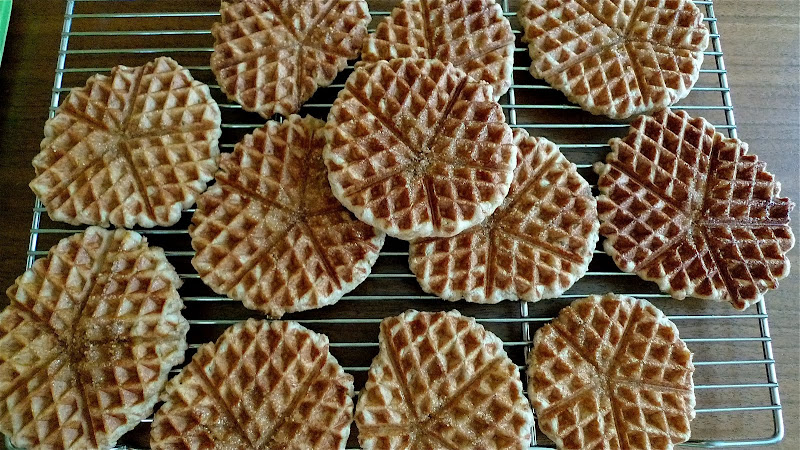Friends! I made some waffles for the annual No Cookie Left Behind bake sale. They turned out fairly pretty, no? Though I do have a few hot tips to share if you are planning on making a batch of these on your own.
1. Get your friends to help you. (Thank you, Heather and Jeana!) This is especially key if you enjoy a friendship with a proud owner of a waffle iron.
2. If you can't find pearl sugar, sprinkle the turbinado sugar on the dough right before pressing it in the iron—that way, we discovered, you can still get the nice melty, caramelization effect on top.
3. Eat them while they're nice and hot. Either that or toast them up later and pair with cream—iced or whipped, the choice is yours.
Also, for those who couldn't make it to the bake sale but would still like to donate to Share Our Strength, click here! And thank you!
Gaufres de Liege via The Kitchn (with more helpful tips via Not Martha)
makes 12 waffles
6 tablespoons warm milk (no hotter than 110°F)
1/2 teaspoons granulated sugar
2 teaspoons instant yeast
1 1/2 cups (230 grams) bread flour, sifted
1 teaspoons cinnamon
2 teaspoons vanilla extract
1/2 teaspoons salt
1 medium egg
1 egg yolk
1/2 cup (4 oz) unsalted butter, at slightly cooler than room temperature
140 grams (3/4 cup) turbinado sugar, or pearl sugar if you choose
Cooking spray
Dissolve the sugar in the warm milk; then add the yeast. Make sure that the milk is not too hot, lest it kill the yeast instead of promoting its growth. Place a plate or some kind of cover on top of the bowl with the milk, sugar and yeast. Set aside for about five minutes. When you check on it, the yeast should have bubbled up, looking light brown and spongy. (See first photo above.)
Meanwhile, mix the sifted bread flour with the cinnamon, vanilla extract, and salt in the bowl of a stand mixer. Pour in the yeast mixture; then add the whole egg and egg yolk. Mix on medium speed until it is fully combined. The dough will be yellow and stiff, yielding only slightly to a poke.
Cover the mixing bowl with plastic wrap and let the dough rest in a warm place for about thirty minutes.
Beat in the butter piece by piece; you do not have to wait for the prior piece to be fully incorporated before adding the next. When the dough has incorporated about half of the butter, the mixture will be like a very thick, somewhat broken-up paste. If you keep engaging the mixer on medium-high speed, the dough will eventually become a cohesive whole, looking smoother and more feeling more elastic. Scrape the sides of the bowl if needed.
Kneading very gently, incorporate the sugar crystals just enough to get them evenly distributed. Work quickly so as not to soften the buttery dough too much.
Divide the dough into a dozen equal pieces, gently forming them into balls.
Place the balls of dough on a cutting board in a warmish place for fifteen minutes or so. During the last two minutes of this resting time, preheat your waffle iron until it is very warm, but not hot.
Spray the griddles with cooking oil. Place each ball of dough in a whole square or section of the waffle iron. Like regular waffle batter, the dough will start to puff up. Cook the waffles until the surface is golden to dark brown. Be sure that the waffle iron you are using is appropriately deep, or else the interior of the waffle will not be cooked through. If you are using a vintage stovetop waffle iron, flip the iron every thirty to forty seconds, lifting the iron to check the rate of browning. The browning should be gradual to allow the interior to fully develop.
Set the waffles on a cooling rack as they come out of the iron to promote a crispy exterior. Serve immediately with a sprinkling of powdered sugar.
Any leftover waffles, if they are not dark brown, can be carefully re-cooked in a toaster for approximately thirty to sixty seconds. Leftover waffles may also be kept in an airtight container between sheets of parchment paper, for up to three days.












No comments:
Post a Comment